Sombrero and guacamole: how Kazan tasted Mexican flavour
Mexican Ambassador Eduardo Villegas Megías spoke about shocking Mayan culinary traditions, the Day of the Dead and controversial moments in the country's history at meetings in Tatarstan
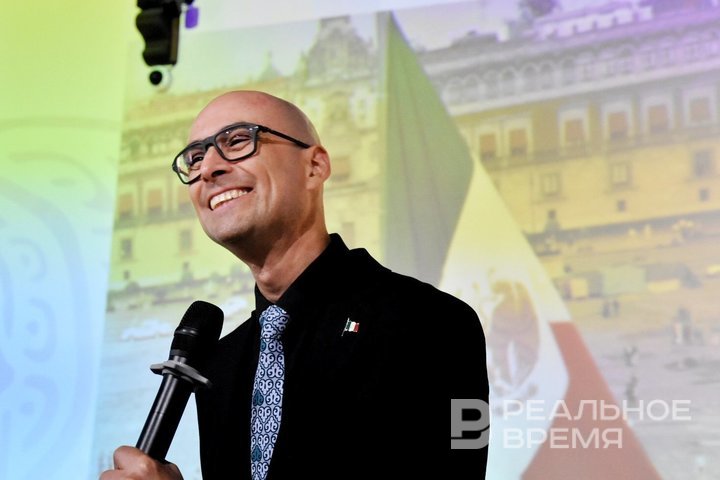
Last week, Kazan hosted the Days of Culture of the United Mexican States in the Republic of Tatarstan. Ambassador Extraordinary and Plenipotentiary of Mexico to Russia Mr Eduardo Villegas Megías and his wife came from Moscow to the capital of Tatarstan. They visited iconic places in Kazan, as well as cultural sites where special events were prepared for the visit of the Mexican ambassador. Realnoe Vremya book reviewer Ekaterina Petrova was present at these visits and tells us all the most interesting things.
¡Viva México!
The presentation of the book History of the Mexican People at the Nikolay Feshin Art School was the first event where journalists were invited to. Despite the fact that journalists were invited, only two people came. And this is a big loss for the regional media. Mexican Ambassador Eduardo Villegas Megías is an incredibly charming and charismatic person, he is open to conversation. Before the presentation of the book, he delivered a short lecture on the history of Mexico for the public that has dubious ideas about this country. At the same time, the ambassador built his speech in an interactive format: he asked questions to the audience and taught how to pronounce ¡Viva México! correctly when he spoke about the country's acquisition of independence.
In addition, Eduardo Villegas Megías talked about Mexican traditions that have their roots in the Mayan and Aztec civilizations, but always with an emphasis on modernity. For example, he talked about a traditional dish. And these are not tortillas, burritos, enchiladas and guacamole sauce. Although they are the first to be come to one’s mind when it comes to Mexican cuisine. The ambassador was talking about pozole. Now pork is added to this dish, and it is very popular in Mexico. The Mexicans have preserved its recipe since the Mayan times. But they have slightly modified it, because the Mayans used human meat instead of pork.
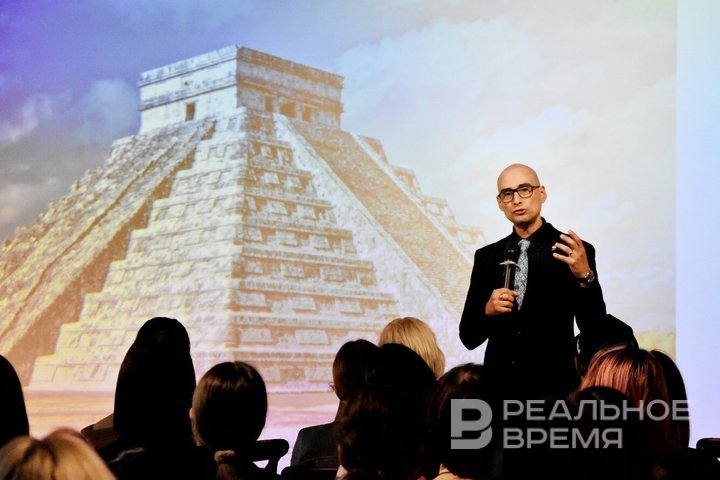
Eduardo Villegas Megías also spoke about the Day of the Dead celebrated in Mexico on 1 and 2 November. On these two days, streets and cemeteries turn into bright kaleidoscopes where there is laughter instead of grief and there are lush altars decorated with sugar skulls and marigold flowers instead of mourning. These “flowers of the dead” are considered guides for the souls of the dead, they help them find their way home. According to the ancient custom, the Aztecs decorated the walls with skulls — tzompantli. By the way, skulls were also kept at home as family heirlooms. The elegant Catherine, a skeleton dressed in a chic dress as if to remind us that death is not the end but just a new facet of the eternal cycle is today's symbol of the holiday. The ambassador spoke about this bright holiday using the example of the 2017 cartoon Coco.
“Now we are talking about the conquest”
Eduardo Villegas Megías concluded his speech at the Art School with a story about the book History of the Mexican People published in 2021. The publication immediately attracted public attention with its unconventional approach to the presentation of historical events. This is not an academic monograph but a collection of articles that, as Mexican Ambassador Eduardo Villegas Megías noted, offer an alternative view of the country's past. The focus is not only on great political figures but also on ordinary people: peasants, women, workers, students.
“The president asked me to create a version of history that would show the role of those who usually remain in the shadows,” the ambassador explained. This approach brings to the forefront those who shaped the country along with kings and conquerors.
The period of the arrival of the Spaniards is one of the most controversial moments covered in the book. Historians have long argued about how to interpret this event. “In 1992, it was called the meeting of two worlds. Now we are talking about conquest,” said Eduardo Villegas Mejias. The book provides a critical assessment of this era, which, according to the authors, still causes heated debate not only in Mexico but also on the international stage.
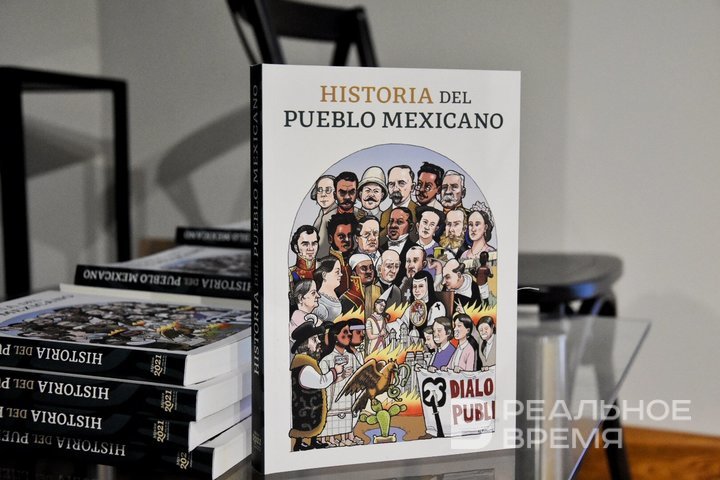
“Former Mexican President López Obrador sent a letter to the king of Spain. And he very respectfully asked the king of Spain to apologise for the conquest of the Mexican people. Naturally, the Spanish monarchy did not agree. This created a diplomatic conflict between Mexico and Spain,” the ambassador noted. He emphasised that history remains alive and changing, especially when it comes to traumatic moments such as colonisation and revolution.
The first edition of the book, which was presented in Kazan, was published in a print run of 97,000 copies and was intended for free distribution among students. It was a kind of invitation to dialogue with those who do not usually delve into academic debates. “We give these books to students of teacher training colleges. The first version was given to them,” the ambassador said. The book generated such interest that a commercial edition for the general public was soon released, which only emphasises its relevance and demand as a source of new, non-canonical history of Mexico.
“My grandfather hated the revolution”
The Mexican Revolution is one of the controversial issues covered in the book History of the Mexican People. It is the subject of an exhibition, which was also visited by the Mexican ambassador. This is not just a series of exhibits, but an immersion into the turbulent years of the struggle for freedom and equality. The central place is occupied by photographs, many of which are taken from the famous Casasola family archive. This family archive covers decades — from the beginning of the 20th century to the 1970s documenting key events in the country. Brothers Agustín Víctor and Miguel Casasola are pioneers of photojournalism in Latin America. With their pictures, they preserved the faces, moods and drama of that time. Today, their photographs are a window into an era where every frame captured history at its most pivotal moments.
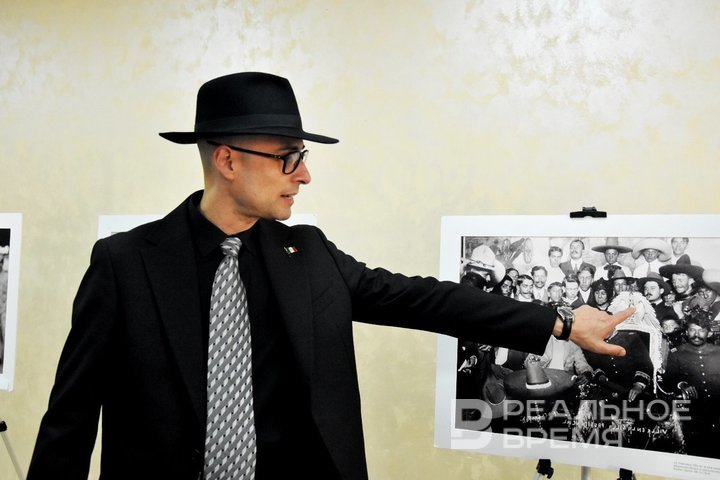
The Mexican Revolution began in 1910 as an uprising against the dictatorship of Porfirio Díaz and led to the adoption of the Constitution of 1917. The exhibition materials emphasise that the Constitution was the result of a compromise between various political and social groups reflecting the demands of peasants, workers and students. This Constitution is considered one of the most progressive of its time. It became the foundation for further reforms, including agrarian and labour. However, as researchers say, many of the goals of the revolution were only partially achieved.
As Eduardo Villegas Megías said, the Mexican Revolution is one of the most controversial topics among the public. According to him, many still believe that it was a big mistake. “My grandfather, my father's father, lived during the revolution. I didn't hear what he said, but my father told me that my grandfather hated the revolution. Because he had to live in those difficult years. You can understand him, because all wars are terrible,” the ambassador told Realnoe Vremya’s journalist.
The exhibition pays special attention to figures whose names are familiar to everyone in Mexico: Emiliano Zapata, Pancho Villa, Francisco Madero. Their role in the revolution has always been controversial. But even more than a hundred years later, the echoes of those events are felt in modern Mexico. One of these echoes is the uprising in Chiapas in 1994, named after Zapata.
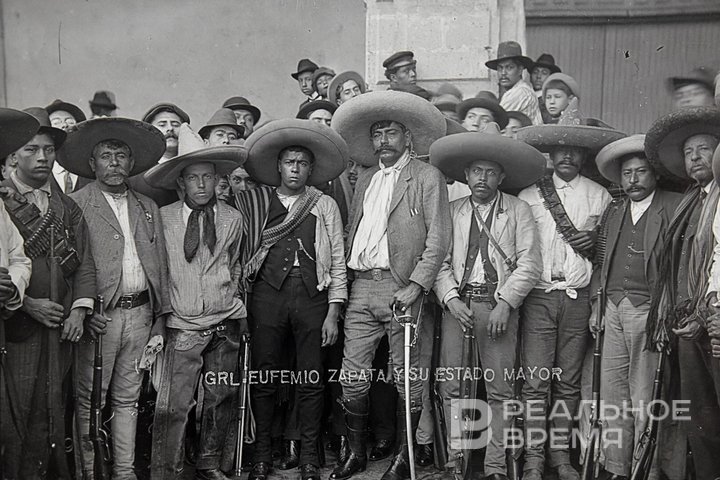
Emiliano Zapata was born in the state of Morelos. His homeland saw him grow from a farm boy to a leader who challenged the dictatorship of Porfirio Díaz. In 1911, Zapata led local peasants in the Battle of Cuautla. It was one of the most decisive victories of the revolution. His famous Plan of Ayala demanded the return of land to the people, and this is what he fought for until the end of his life. It was not books or lectures that inspired him — it was the thousands of peasants whose voices Zapata turned into demands.
But his fight was not only with weapons in hand. He found himself at the centre of complex political intrigues that ultimately led to his death. The trap set by General Pablo González in 1919 looked almost like a scene from a tragedy: to the sound of the bell, Zapata rode up to the gates of the hacienda of San Juan Chinameca, where marksmen were already waiting for him. One shot — and he fell from his horse. The legendary leader of the rebels died, but his ideas and words “It is better to die standing than to live on your knees” have survived the centuries and continue to sound as a reminder of the strength of the national spirit.
Main Stars of Mexico
The next heroes of Mexico, this time in the cultural sphere, are the artists Frida Kahlo and Diego Rivera. It is their relationship that became the central theme of the photo project Diego and Frida: A Smile Halfway exhibited in the Kazan Kremlin Compound. The story of Frida Kahlo and Diego Rivera begins with the clash of two elements — fragility and massiveness, brightness and darkness. In 1928, Frida, then still a young artist full of creative ambitions, decided to show her works to the already recognised master of Mexican monumentalism. It is difficult to say what struck Rivera more — the paintings themselves or the personality of their author. “An artist by nature,” Diego said about Frida. It was then that a connection was formed between them, which in the future would turn into a relationship full of contradictions.
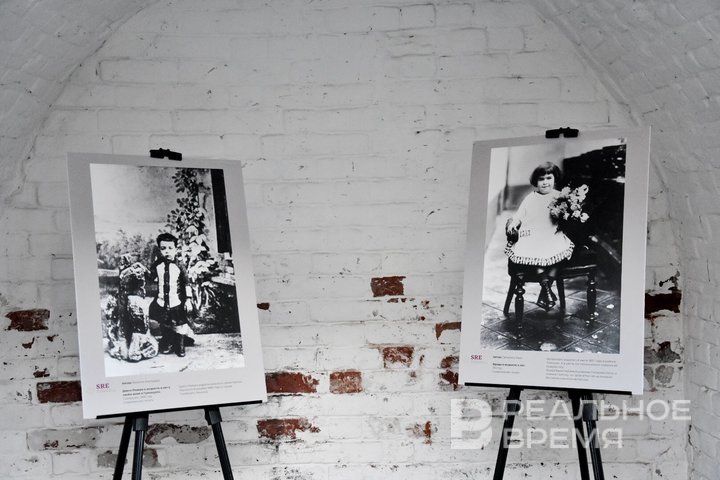
A year later they got married, and the wedding took place under gunfire. Literally: Diego was eccentric in everything, took out a gun and started shooting at the guests. But this was only the first act in their stormy coexistence. The house where they lived, known as the Blue House became the Mexican centre of cultural life. The greatest figures of art and politics of the time, from Leon Trotsky to Andre Breton, passed through its doors. It was not just a house but a place where creative passions intersected with personal passions.
However, their relationship was always on the edge — from passion to destruction. Rivera, known for his attraction to women, was in no hurry to give up on his affairs, which destroyed Frida. In response, she took up her brush with fury splashing her feelings onto the canvas. One of these works, imbued with the pain of betrayal, shows a woman cut as if by a knife. This was their dialogue: on canvas, in life, between truth and lies.
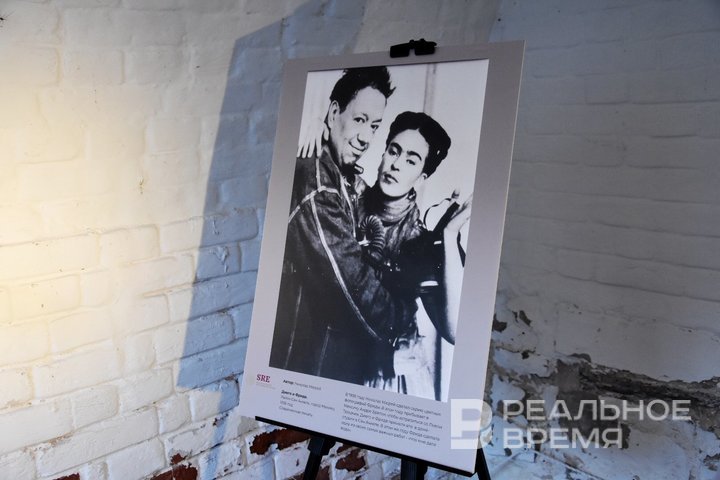
There are works by the world-famous Hungarian photographer Nicholas Murray among the reproductions of photographs presented at the exhibition. He captured happy Frida and Diego. It is curious that at that time Murray was in a relationship with Frida. They met in 1931 amid two unstable marriages. Murray, divorced, had already made a name for himself in the world of photography. And Frida was at that time married to Diego Rivera whose numerous affairs often left her alone with pain. Nicolas and Frida's relationship lasted ten years — a passion intertwined with cultural contrasts and historical events. Incidentally, it was Nicolas Murray who took the bright colourful portraits of Frida that are known throughout the world. Frida and Nicolas remained friends until her death in 1954, despite the photographer's attempts to break off their relationship in 1941.
The exhibition also includes a photograph of Leon Trotsky whose life was closely intertwined with the fate of not only Mexico but also its great artist. Leon Trotsky and Frida Kahlo are a couple that existed on the edge of political ambitions and personal vengeance. When Trotsky, exiled from the USSR and seeking refuge, arrived in Mexico in 1937, he was met by the talented and charismatic Frida, Diego Rivera’s wife. At first, their relationship was intellectual: Trotsky admired the boldness and originality of her paintings, and Frida admired Leon’s revolutionary past. But behind the façade of a shared interest in art and politics, there were more personal motives. For Frida, the affair was an opportunity to take revenge on Diego for his numerous betrayals, and for Trotsky, a chance to return to his emotional youth.
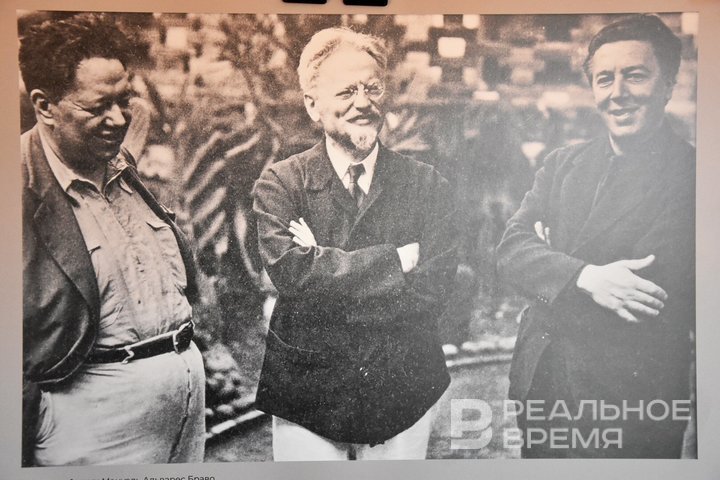
Soon they began a secret correspondence, hiding notes in books that they passed to each other. And walks around Kahlo’s house became a reminder of how easy it is to hide true feelings behind conversations about politics. For Frida, this affair was just one of many, while for Trotsky it was a desperate attempt to regain his youthful passion. Natalia Sedova, Trotsky's faithful companion, found herself in the centre of this triangle. She suffered not only from political persecution but also from a broken marriage. While Trotsky was experiencing new love affairs, his revolutionary path was approaching its fatal point.
There are never enough books
The National Library of Tatarstan was the final stop of the visit of the Mexican Ambassador Eduardo Villegas Megías and his wife. It features a photo exhibition called The Cultural Diversity of Mexico. These are photographs of iconic historical and cultural monuments. But it was not they that were of interest but the rare books about Mexico that are kept in the National Library's collection. Together with other publications dedicated to the culture and history of Mexico, they were shown to the ambassador and his wife.

Sofia Danevskaya’s book Discovery and Conquest of Mexico published in 1898 further enriches the library’s shelves. This work was intended for a young audience but the factual basis of the book is impressive. Danevskaya was able to convey the complexity and significance of the events that began with the discovery of America by Columbus to a 19th-century reader. This was an era when Mexico was becoming closer not only through expeditions and military campaigns but also through the pages of books.
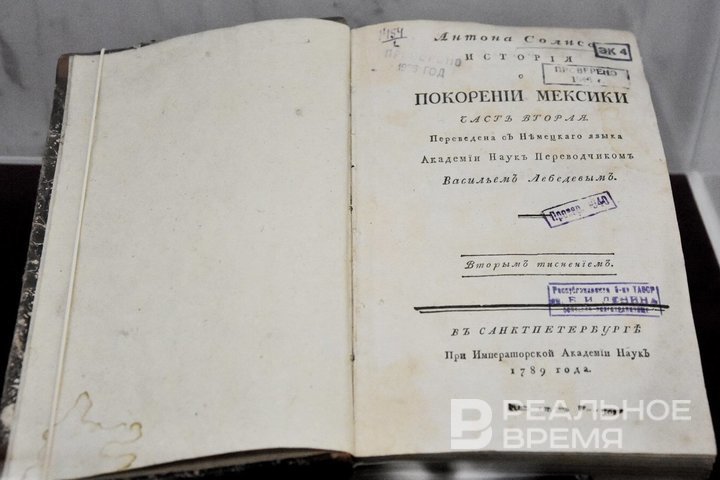
French scientist Jean-Jacques Élisée Reclus did not ignore Mexico either. His 19-volume study Land and People he wrote for 20 years is also present in the library. Reclus sought to cover not only the geography of Mexico but also the ethnography, nature and economy of the country. His works published in 1873-1893 were created in conditions of continuous travel and enormous personal dedication. In his works, Mexico appears not only as a territory but as part of a global picture of the world. Reclus was the first to systematise such data putting up to 900 pages of analysis into each volume.
In response to the demonstration of a rather impressive collection of rare books about Mexico, Eduardo Villegas Megías donated several editions in Spanish. A colourful catalogue about the country's nature and a catalogue with Mexican landscapes, a book about modern Mexican architecture and a collection of works by Russian writers in Spanish were among them.
Ekaterina Petrova is a book reviewer of Realnoe Vremya online newspaper, the author of Poppy Seed Muffins Telegram channel and founder of the first online subscription book club Makulatura.